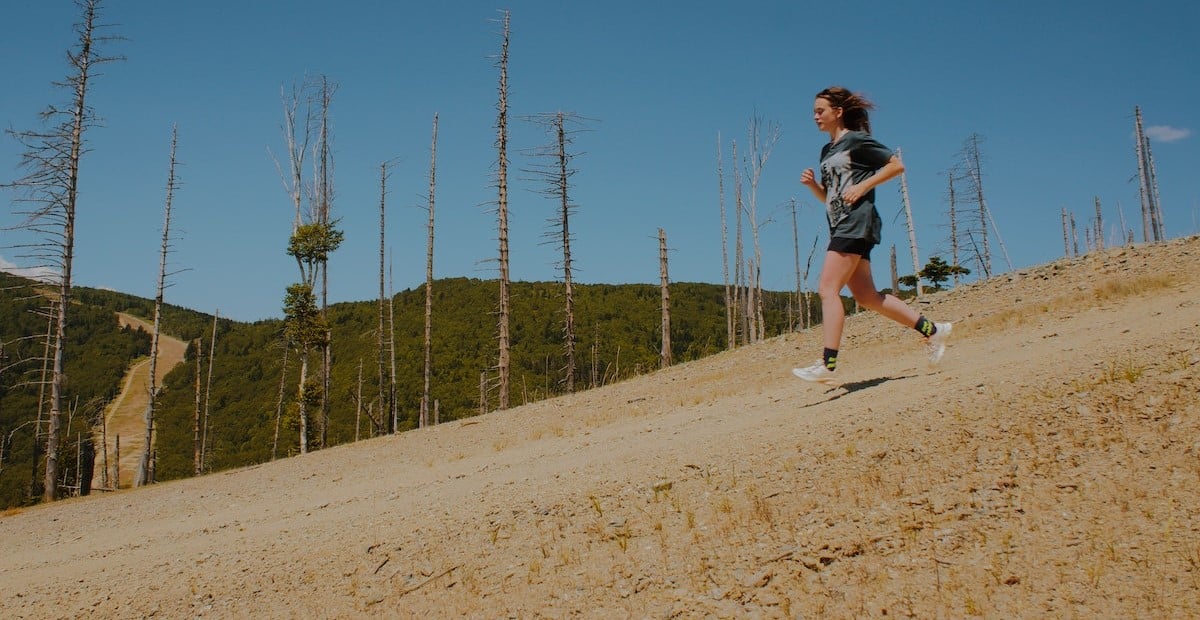
Contents
Running hill sprints with hill training to maximise stride power, endurance, and cardiovascular efficiency all round
Hill sprints are hard. It didn’t take me to write that for you to know but often we can forget something – the harder the challenge the greater the benefit. So what e,xactly makes hill sprints so hard, beyond the surface-level sense of dread?
A hill sprint workout challenges a good few parts of your body. Firstly, anaerobic capacity – the volume of oxygen that can be both intaken, converted and supplied. The more oxygen you have the more muscle fibers benefit from oxygenated blood. Secondly, muscle strength in a broader sense – the more you work your muscles, breaking down muscle tissue, the more they’ll repair and the stronger you become.
But that’s not all…
Using, for example, a steep hill for training will help your overall long-distance running. Simply, without getting sciency, if you acclimatise your cardiovascular systems to high-intensity workouts then, for a lesser period at least, your body will be better tuned for lighter intensity work the next time you run.
Make sense?
Let’s run through the subtle art of the hill sprinting, so it evolves in your mind beyond some punishment us fitness blog writers like to encourage you to do…
Walking tall
Well, running tall…
It’s much, much easier to engage your glutes when you stand tall. Your glutes will of course help drive you to reach your target peak, so avoid leaning forward and taking power away from your glutes. You’ll find more power and more charge with this method, and make the most out of your hill running routines.
No neglects
The Run Experience writes, ”You probably notice your lower body more while running hill sprints since it’s your legs that are cranking out the work. But, think about how your upper body can complement your running. Instead of just letting your arms swing weakly, focus on actively driving them back as you run uphill.” And the more you utilise this form technique the more power you can drive, making your hill sprints more efficient and your results far more beneficial.
One thing to note, however, you may be inclined to tense your upper body as a result of this thinking. Do not do this… it can cause injury, waste energy and just trample your overall performance, both now and in the future.


Steps counted
You should also make sure that you keep your steps up. Some refer to this as cadence, but all in all the difference between a great hill sprint and an okay hill sprint is number of steps. Simply, if you’re gruelling your way up and slogging, likewise if you sprint with too many steps (unnecessarily tight increments) then you’ll be negatively impacting your hill sprint efficiency.
Conclusion
To summarise, hill sprint sessions are game-changing. If you want to raise your game then, well, get of the flat ground, find a suitable hill and raise your running terrain.
FAQs
How many repeats are too many hill repeats?
It completely depends on your form, current athletic state and your objectives. You want to avoid injury at all costs but don’t want to take it too easy either.
How long is it for most runners before they see the benefits of hill sprints?
From the first session of a hill workout at maximum effort, max speed, you’ll begin to feel the gains. If balanced well with recovery and alternative exercise, then every time you perform hill sprints afterwards, you’ll be building on your last maximum effort uphill sessions week on week.